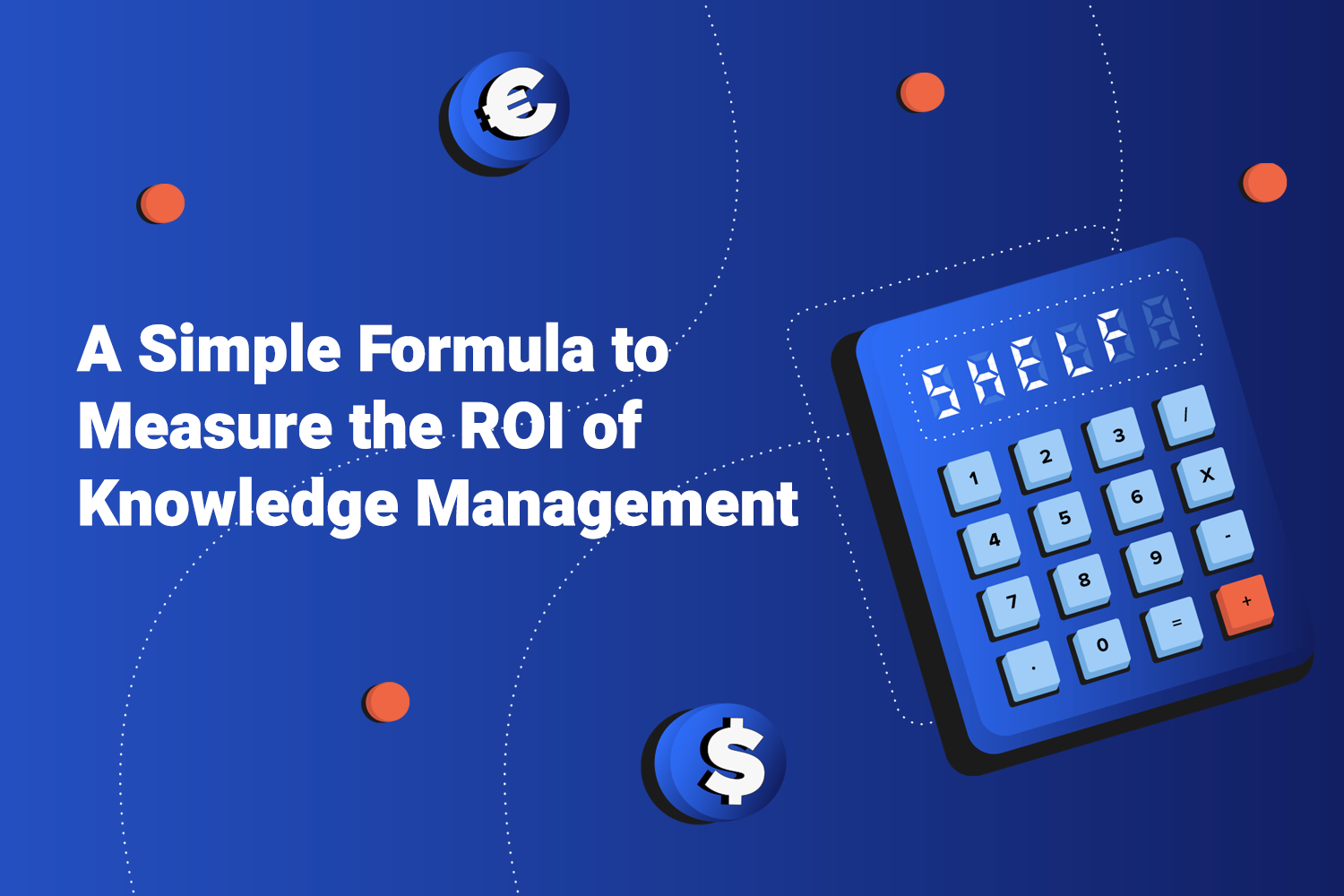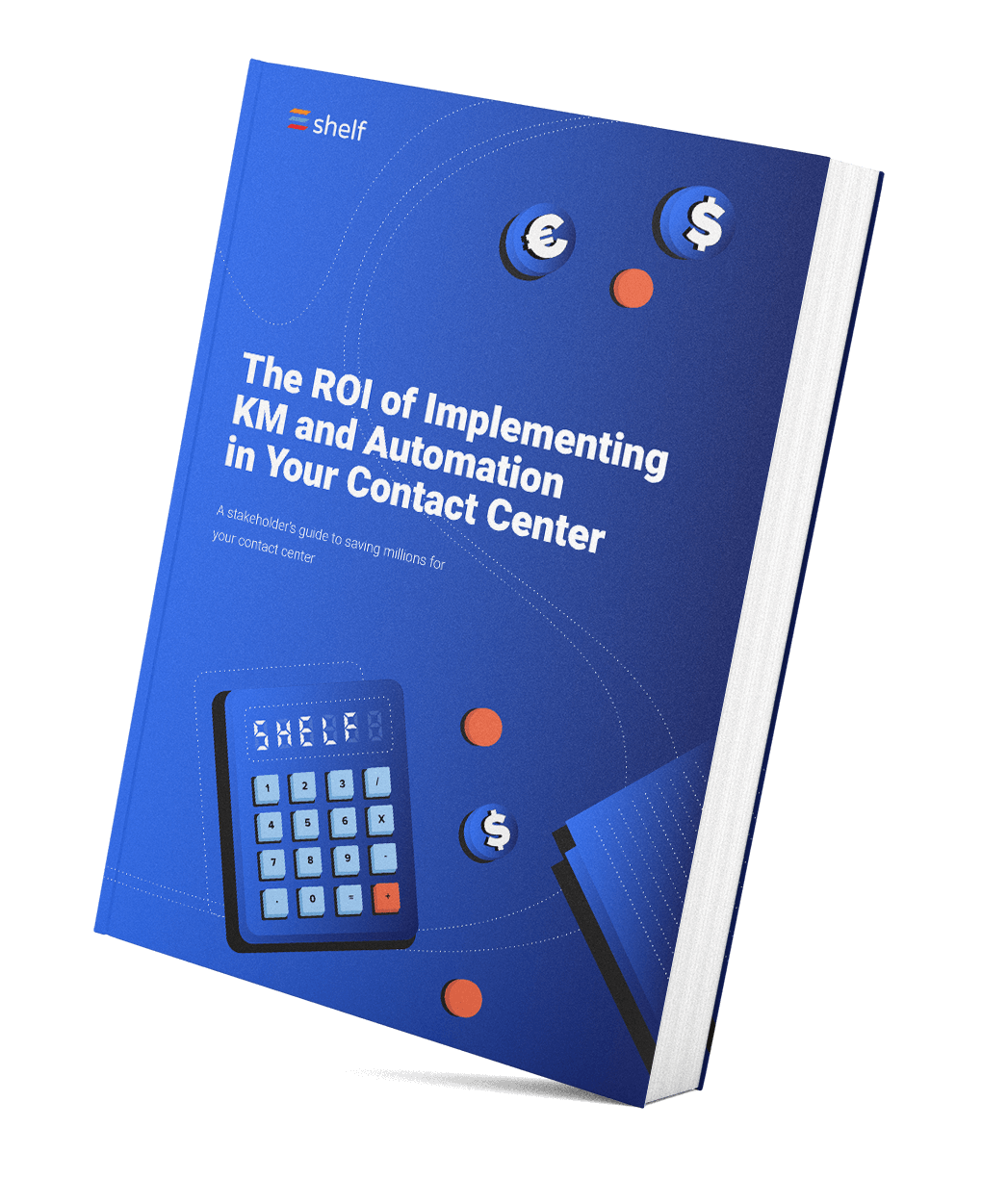So much of business momentum is predicated on trust, and nowhere else is that truer than in the contact center. You can build a tremendous contact center operation, including a foundational knowledge management solution, only to find frustration high, adoption low.
From AI to digital scorecards and speech analytics, it’s only natural for contact center professionals to have trust issues with new technologies. In some cases (chatbots come to mind), these new technologies threaten to replace the work of an agent altogether. At least that’s the perception.
Yet, letting trust issues halt the progression of your contact center is a mistake. That’s especially true of knowledge management and answer automation, our focus for this blog post. We could tell you endless stories about companies that failed by failing to innovate, but there’s something even more persuasive than anecdotes:
Numbers.
Measuring ROI of a KM initiative
As it turns out, knowledge management ROI can be elusive—as one of our own customers once remarked, “reps who have years of experience found it hard to trust AI-suggested answers at first. They just didn’t believe the right answer could be acquired that easily.”
Naturally, that customer was highly interested in finding the ROI of the Shelf knowledge management solution they just rolled out. At a high level, we know that knowledge management can create tremendous efficiency gains. One oft-cited McKinsey Global Institute report estimates that “a searchable record of knowledge” can reduce the time employees spend on information look-up by 35%.
That said, it’s time to get wayyy more specific about the measurable ROI of knowledge management. Especially in the contact center environment, where numbers run the show, demonstrating clear business benefits is essential for continuous commitment to the project.
Know the Contact Center KPIs Affected by Knowledge Management
First things first, which key performance indicators (KPIs) should you measure and how? Knowledge management affects the internal processes that can directly impact your usual KPIs, which all eventually contribute to customer satisfaction (CSAT). These include:
Average handle time (AHT): Improves when agents spend less time searching for information and more time closing inquiries by following simple, clearly written steps (decision trees, for example)
First contact resolution (FCR): With a reliable source of information at their fingertips, agents are confident in their answers and rarely need to “find out and call back” or give “blurry” answers that lead to repeated inquiries
Average hold time: There’s no need to keep customers on hold if researching relevant information only takes a second or two—ideally, the necessary knowledge can be presented to the agents before the customer even says “hello”
After-call work time: Use a guided process to reduce the random clicks, cheat sheets, and “hey, what do I do now?” moments after the call ends
Calls handled: When your average handle time is 30% lower, what else is there to do apart from taking more calls, right?
Measure Causation, Not Correlation
Of course, knowledge management contributes to CSAT, net promoter score (NPS), and customer effort score (CES). For the purposes of this conversation about ROI, we’ll leave those three KPIs for another blog post. Why? Because determining true ROI means determining causation, not correlation.
In terms of evaluating the knowledge management solution itself, how do you know if your team is simply not using the tool? Or worse, everyone’s using it, but the content isn’t helpful? Beyond strict, bottom-line ROI, make sure to look into the other numbers embedded in your knowledge management tool:
Team usage: Make sure your team is engaging with content, participating in workflows, and contributing at a clip you’re comfortable with
Individual usage: How is the tool affecting the performance of each team member in the contact center? Is there a hard-data indicator of what’s stopping you from reaching your final goals?
Content performance: Analyze what agents are looking for, their qualitative and quantitative feedback, what searches don’t return results (content gaps), then correlate that data to see how often these issues are repeated and cause consistently long handle times
Use a Hard-Numbers Formula For Knowledge Management ROI
Nearly 100% of our own customers want the ability to calculate ROI for their knowledge management solution. That includes contact center directors who need a reliable number to wave in front of the executive team. Or knowledge managers who need to make a business case for implementing and expanding a knowledge management solution.
Here’s the five-part formula that we use:
- Number of contact center interactions per month across the entire contact center
- Average time saved per interaction (by type) based on contact center averages
- Average training time for new agents based on contact center average
- Hourly rate of an agent (the average rate of fully trained agent)
- Percentage of interactions per knowledge automation capability across the entire contact center
We detail the full formula and its application in our guide to knowledge management ROI: The ROI of Knowledge Management and Answer Automation: A stakeholder’s guide to saving millions for your contact center.
Download our ROI Guide to Calculate How Much You Could Be Saving
Not sure how a smarter knowledge management could impact your business?
Download our ROI guide to crunch the numbers for yourself and explore the actual ROI you could experience. We’ve tied actual dollars to specific metrics you care about most!





